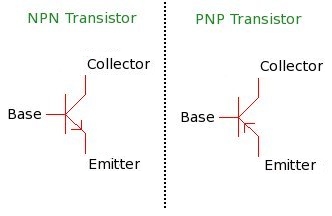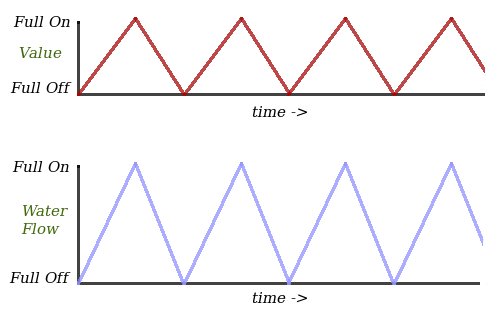A transistor is a three pin semiconductor component. Transistor is one of the most interesting component, if you understand its working properly, then you can think of large number of particle scenario where you can find transistor is the best choice for implementation and it will open a new door of circuit implementation, hence basic understanding of transistor is very important.

These three pin of the transistor are called emitter, collector and base as shown below.

1) Transistor are of two types, PNP and NPN
2) Transistor can be considered same as a valve which is used to control flow of water between two connecting pipes, and the hand wheel is use to controls flow of water. In transistor we don't have hand wheel to control flow of current but there is some thing which can be used for control.

Lets understand working of transistor through an analogical model. The image above shows a pipe carrying water and a valve controlling its flow. Water entering from a section marked as collector . Flow of water is getting controlled by value named Base, and it is coming out from a section marked emitter .
Now lets focus on some of the facts of this model.
- Small amount of force is required to turn the wheel which is controlling a large amount of water, and large amount of force.
-
Any pattern that is followed for turning the wheel will be observed in the water pattern of water coming out.
Lets understand this point clearly. Suppose some one changing the wheel in such a way that he is following a pattern with time. Then the outgoing water will also follow the same pattern. This is shown in the image below.

Transistors also work in quite similar fashion. Large current which flows between collector and emitter is controlled through base pin. On transistors you won't find any flow control wheel, but a very small current fed at base pin controls large emitter current. The emitter current will be always in in ratio of base current, and this ratio is constant for each transistor.This constant value is provided by manufacturer and is know as beta of transistor. Betas are generally of the range 50 to 200.
Hence, (base_current * Beta) = emitter_current
The arrow mark on transistor symbol shows the type of transistor (NPN or PNP), and also shows the direction of the current. e.g In npn transistor current flows from collector to emitter, whereas in PNP current flows from emitter to collector. In PNP transistor emitter current is controlled by drawing base current (not by feeding).
